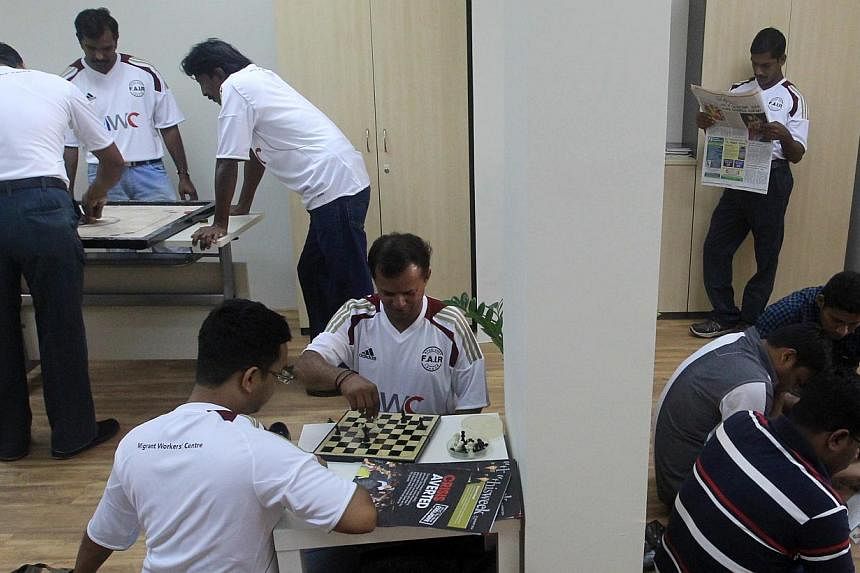Later this year, Singapore seems certain to adopt a law that will provide severe penalties for trafficking people for sexual exploitation.
An anti-trafficking act is expected to recognise the need to protect the victims of this form of trafficking - including in those cases where they have broken laws while effectively under the control of those who exploit them.
The new law will also deal with labour trafficking in general. But questions have been raised about how effectively and comprehensively it would do so.
While the need for firm action against labour trafficking is widely recognised, translating this recognition into practical legal measures presents a challenge.
The problem, in a nutshell, is that it is difficult to draw a clear distinction between people who have been trafficked into labour exploitation and migrant workers in the worst conditions of employment.
Given that there are a million migrant workers in Singapore, even if only one in 50 faced such conditions, that would be 20,000 people.
If, besides being underpaid, overworked and mistreated, many of the 20,000 claim to be trafficked as well, the authorities would be presented with an additional headache. It would certainly not help Singapore's international image.
Why risk opening a can of worms by introducing a law that might encourage hundreds or even thousands of disgruntled workers to allege that they have been trafficked?
One source of confusion may be the "trafficking indicators" used by a number of international institutions and national law enforcement agencies.
Each indicator describes a sign that an immigration official or a police officer might recognise in an individual's experience or behaviour that could suggest he or she is a trafficked person.
Most of the indicators feature in the experiences of many migrant workers. The list of indicators produced by the United Nations Office on Drugs and Crime, for example, says that people who have been trafficked into labour exploitation may "live in degraded, unsuitable places", "have no labour contract", "work excessively long hours", "depend on their employer for a number of services, including work, transportation and accommodation" as well as a variety of other conditions familiar to those who hear the complaints of migrant workers.
But it must be understood that indicators such as these are intended to serve as signals that further investigation is needed. They do not in themselves prove that a person has been trafficked.
Three fundamental characteristics qualify trafficking.
Trafficking involves first, the movement of a person from his or her normal place of residence.
Second, it requires the use of force, coercion, fraud, deception, abuse of power or exploitation of vulnerability.
Third, it is for the purpose of exploitation.
If any of these fundamental elements are absent, then trafficking cannot be said to have occurred, even though a worker has been subjected to a range of abuses.
But Singapore should not have to appeal to this standard in order to avoid groundless claims.
Instead, it can work to improve the conditions of migrant workers in general, and those in the worst situations in particular, so that conditions described as "trafficking indicators" are eliminated.
Some measures may be quite modest, such as introducing itemised payslips and payment into personal bank accounts for low-paid workers. These particular measures would help protect them against exploitation by employers who do not want to pay workers their salary in full.
It would enable them to see easily how their pay (regular, plus overtime, minus deductions) was calculated and whether the record is accurate, and check that the amount paid corresponded to that stated; it would assist in resolving any dispute, whether "in house" or with the intervention of the Ministry of Manpower.
Another measure would be to insist that the terms offered to a worker to persuade him to take a job in Singapore should not only be put into writing, but should also be binding upon an employer. And once the worker arrives in Singapore, the employer should be barred from inducing a worker to agree to inferior terms.
To control immigration, the Government wants to ensure that migrant workers return home and do not settle. This is why, through their permits, they are attached to a specific employer who would be made responsible for their repatriation.
However, a by-product of the system is that employers are given great potential coercive power, which the less scrupulous may use to make workers accept employment conditions inferior to those promised when they were recruited, and sometimes agree to terms that violate Singapore's own laws.
The system should therefore be revised to allow workers in possession of work permits to move to different employers more easily.
Making it easier for workers to stay on would also help retain workers with training and experience in Singapore so that they enhance its productivity rather than that of another country.
With changes such as these, Singapore could adopt a robust, comprehensive anti-trafficking law, confident that it would deliver protection to those needing it without fear of misuse.
The writer is immediate past president of migrant workers group TWC2.

